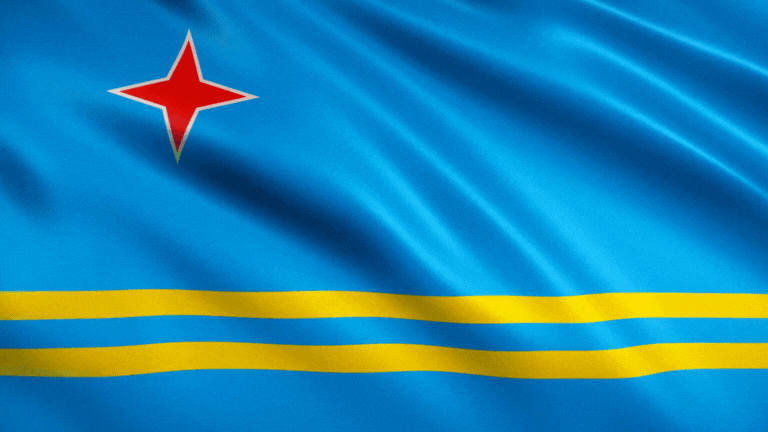Please be aware that this article may contain links to products and services we recommend. If you click on any of these links, we may earn a commission at no extra cost to you. We only endorse products and services that we believe will add value to our readers. Learn more here.
Aruba Flag: History & Symbolism
Hack The Quiz
8/7/20243 min read
This article explores the history and symbolism of the Aruba flag, highlighting Aruba’s location in the Caribbean and explaining how the flag’s design reflects the island’s natural beauty, cultural heritage, and autonomy.
Where is Aruba?
Aruba is an island in the southern Caribbean Sea, located just off the coast of Venezuela. It is part of the Kingdom of the Netherlands and is known for its beautiful white-sand beaches, desert-like landscapes, and warm, sunny climate. Aruba, along with Curaçao, Sint Maarten, and the Netherlands, forms one of the four constituent countries within the Kingdom of the Netherlands.
Aruba gained its separate status from the Netherlands Antilles on January 1, 1986, but remains under the sovereignty of the Kingdom of the Netherlands. The national flag was adopted on March 18, 1976, symbolizing Aruba’s distinct cultural identity and its journey toward self-governance.
The History of the Aruba Flag
The flag of Aruba was officially adopted on March 18, 1976, almost a decade before the island obtained its separate status from the Netherlands Antilles. The flag was designed to symbolize Aruba's unique culture, natural beauty, and aspirations for autonomy.
The flag’s design was chosen by the people of Aruba and is rich in meaning, reflecting both the island's heritage and its physical environment. The bright colors of the flag are meant to represent the island’s natural and cultural elements, which contribute to its distinct identity within the Kingdom of the Netherlands.
Breaking Down the Aruba Flag’s Design
The flag of Aruba features a light blue background with two narrow horizontal yellow stripes across the bottom and a red four-pointed star outlined in white in the top left corner. Each element of the flag carries significant meaning tied to Aruba’s culture, history, and natural features.
Let’s break down the elements of the flag:
The Light Blue Background
The blue background represents the sea and sky that surround Aruba, reflecting the island’s stunning coastal views and its deep connection to the ocean. It also symbolizes peace and the beauty of Aruba’s natural environment.
The Yellow Stripes
The two narrow yellow stripes near the bottom of the flag represent Aruba’s abundance of resources and prosperity. They also symbolize the island’s golden beaches, which are among Aruba’s most famous attractions, as well as the warmth of its people. The yellow stripes also reflect Aruba’s success in tourism and its economic growth.
The Red Star
The red four-pointed star, outlined in white, represents Aruba itself—its location, people, and identity. The star symbolizes the four points of the compass, highlighting Aruba’s open and welcoming nature toward visitors from all over the world. The red color represents the love and passion of the Aruban people, while the white outline symbolizes purity and honesty.
The Four Points of the Star
The four points of the star also symbolize the island’s history of cultural diversity, representing the influences of the Indigenous peoples, Africans, Europeans, and other groups that have shaped Aruba’s culture over the years.
Final Thoughts
The flag of Aruba is a bright and meaningful symbol of the island’s unique culture, natural beauty, and its distinct status within the Kingdom of the Netherlands. The blue background represents the surrounding sea and the beauty of the island, while the yellow stripes symbolize Aruba’s prosperity and warmth. The red star signifies the passion of the Aruban people and the welcoming nature of the island.
Since its adoption in 1976, the flag has become an important emblem of national pride, flown during events like Aruba’s Flag and Anthem Day on March 18. It stands as a reminder of the island’s journey toward autonomy, its vibrant culture, and the natural beauty that draws visitors from around the world.
Expand your mind ...
Explore trivia that broadens your understanding and knowledge of the world.
WE ARE HERE FOR YOU
JOIN US and hack the quiz
info@hackthequiz.com
© 2024. All rights reserved.



